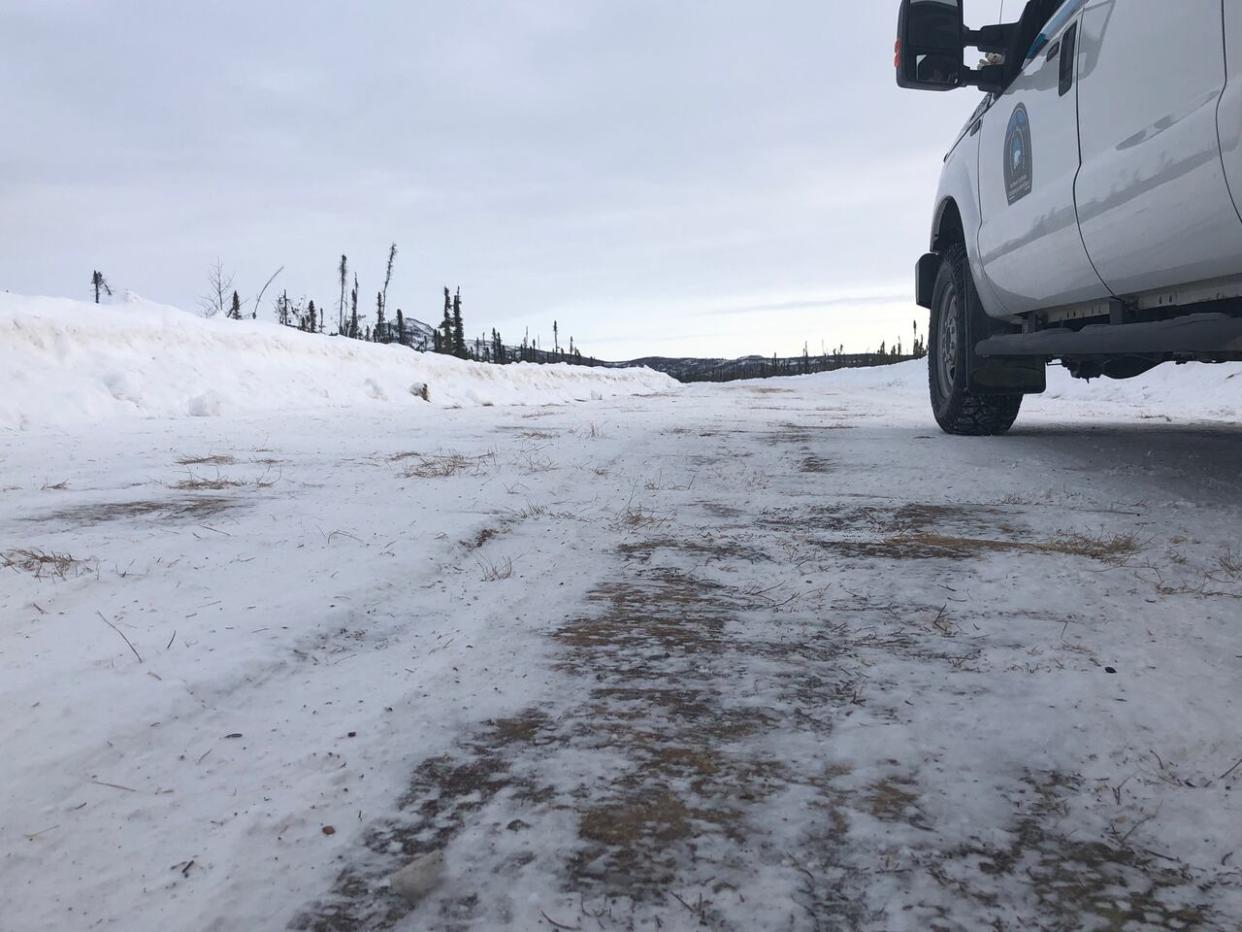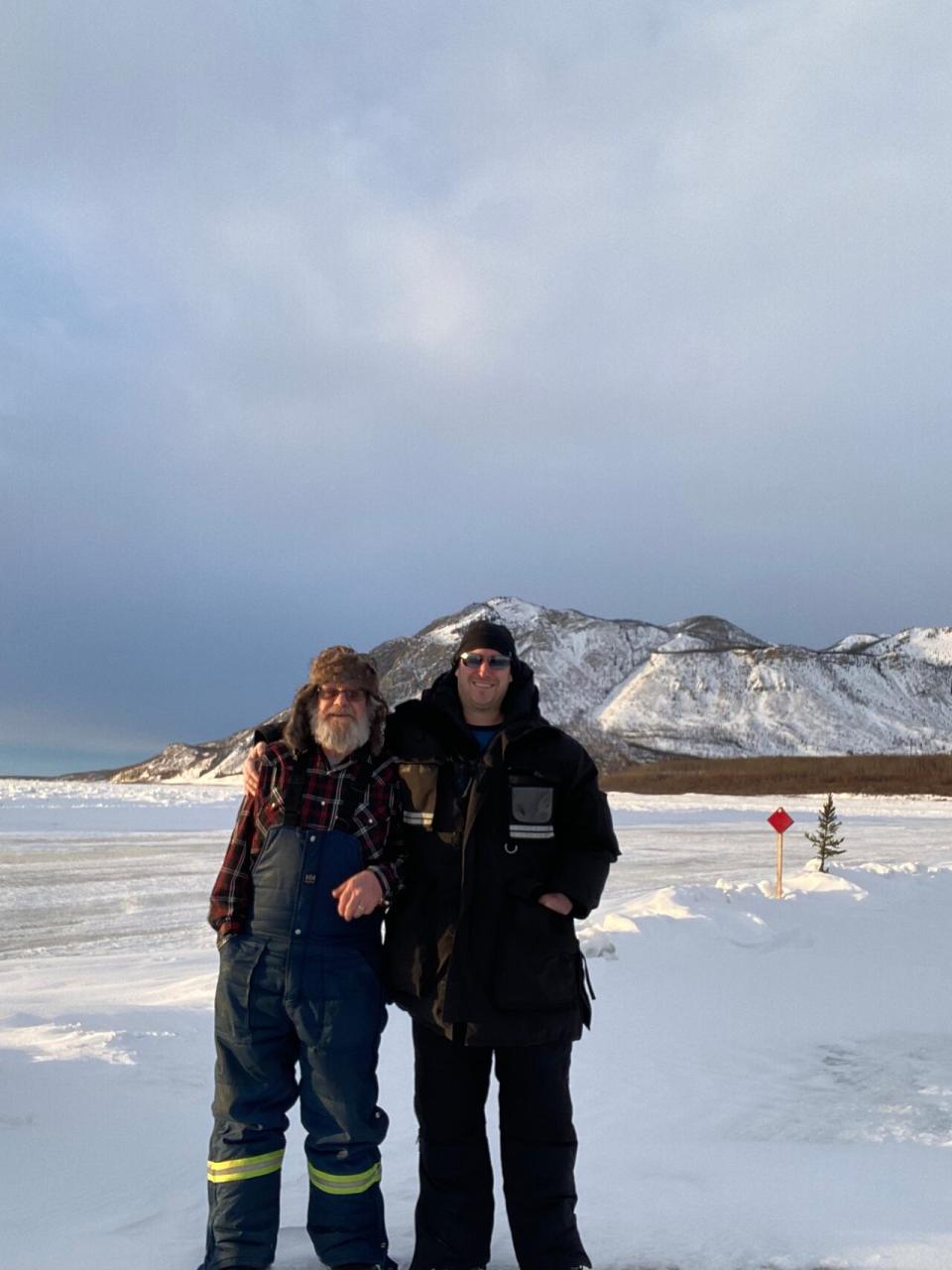Believe it or not, most N.W.T. winter roads had a 'fairly typical' season

How did this winter road season in the Northwest Territories go?
It depends where you were.
In Norman Wells, Mayor Frank Pope said the winter road was open longer than expected this year, and the resupply went smoothly. Others in the Mackenzie Valley agreed, from contractors in Norman Wells to the manager of Colville Lake's co-op grocery store.
Nahanni Butte also had a successful resupply before the ice crossing into the community closed on Friday, according to Chief Steve Vital.
"We got in eight modular homes, we got in our last shipment of groceries and whatever we needed for the store. Pretty much everything we needed for isolation," he said.
But not all communities fared equally well.

Dustin Dewar (right) with colleague Michael Hempler on the Mackenzie River ice crossing at Tulita. This year, he said that the Tulita winter road and others along the Mackenzie Valley had a "fairly typical" season. (Submitted by Dustin Dewar)
Wekweètì's winter road was projected to close sometime Monday, less than three weeks after it opened, and travel has been limited to vehicles under 20,000 kg.
The community government was able to complete its resupply, but only by paying for extra trucks so shipments wouldn't be above the weight limit for the road, according to Wekweètì SAO Fred Behrens. He estimated that the move to smaller trucks cost the community about $10,000 in transportation fees.
Meanwhile, community members have been scrambling to get their cars serviced and groceries done while the road is open.
"It's been kind of crazy," Behrens said.
North Slave roads an outlier
Dustin Dewar is the N.W.T government's manager of highway operations for the Sahtu and Dehcho. He said that overall, this was a "fairly typical" winter road season for both regions, despite an abnormally warm November and December and low snowfall.
But in the North Slave, the operational window for winter roads has been shorter than normal, even compared to the last couple of years.
Dewar said the difference has a bit to do with weather, but mostly with differences in geography across the roads.
The Mackenzie Valley winter road is mostly on land, and the lack of snow early in the winter actually allowed frost to penetrate the ground more quickly. But for ice roads like the Dettah road and the Fort Simpson ice crossing, ice took longer to reach the necessary thickness.
Roads to Gamètì and Wekweètì, which include many portages between lakes full of organic matter, were the most affected by the warm start this year.
But Dewar said that by-and-large, challenges with the operation of winter roads this year didn't affect the flow of needed supplies into communities, thanks to a lot of communication between teams that worked on the roads and companies that delivered supplies.
"Everything planned that was available for the communities was successfully delivered."
As for how things will go next year, while the department of infrastructure will be looking at historical opening and closing dates, its difficult to know. But if there are similarly warm temperatures, roads to Tłı̨chǫ communities will likely see similar challenges.
"What's becoming more evident is the wild shifts in weather that are becoming increasingly more difficult to predict."


